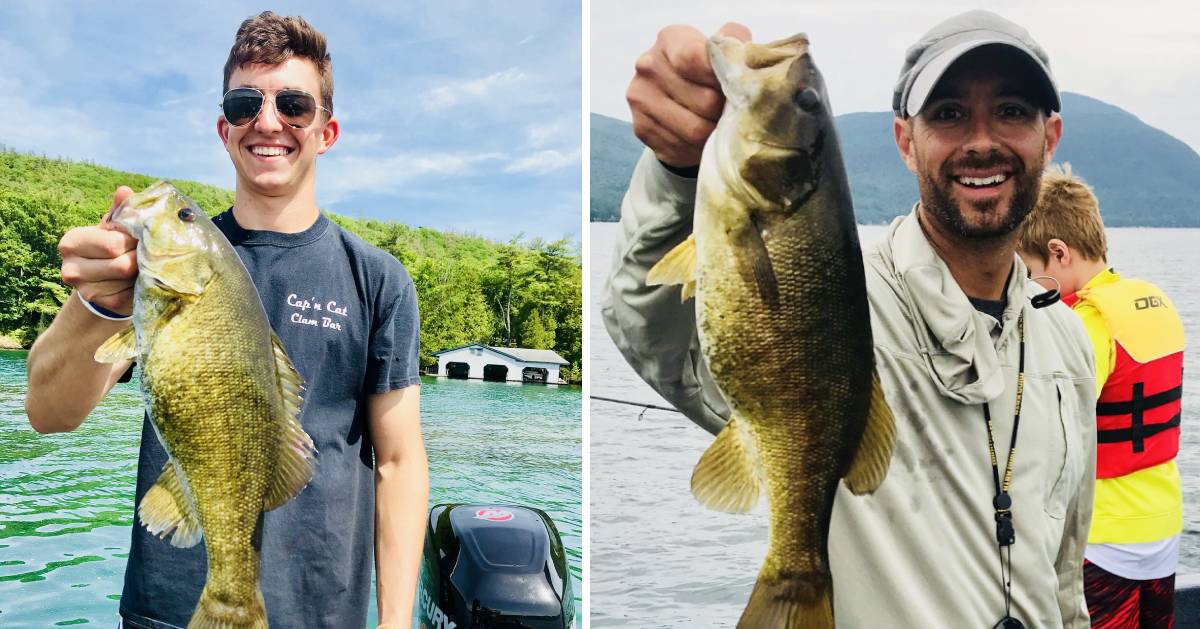Know Lake George Fishing Regulations & Seasons Before You Cast Your Line
New York State and the Department of Environmental Conservation (DEC) have established statewide freshwater fishing regulations that all fishermen must abide by. While many fishing seasons and limits are the same throughout New York State, fishermen must also remember to check whether a body or water has special fishing regulations as well.
For Lake George, most of the statewide regulations apply. However, there are a few special regulations to be mindful of if you plan to go fishing on the lake. Check out the seasons and regulations for fish found in Lake George below!

Notable Fishing Regulation Changes
Here's an overview of the new regulations that were implemented last year and are still in effect for the 2024 season:
- Rainbow trout, brown trout, and splake seasons in lakes and ponds are now open year-round, with a 5 fish daily limit, any size, with a "no more than two longer than 12 inches" rule
- Statewide Atlantic salmon regulations now allow for year-round open season
- Ice fishing is permitted on all waters in the state unless specifically prohibited, with the exception of Essex, Franklin, Fulton, Hamilton, Herkimer, Lewis, St. Lawrence, Warren, and Washington Counties
- 5 fish daily walleye limit in Oneida Lake
- New regulation to limit the growth of walleye population in Skaneateles Lake - no daily possession limit, 12-inch minimum size limit, open year round
- Statewide sunfish daily harvest limit reduced from 50 to 25 fish
- Statewide minimum size limit for crappie has been increased from 9 inches to 10
And, new specific dates have replaced floating dates for statewide season openers to include:
- May 1 - Walleye, Northern Pike, Pickerel, and Tiger Muskellunge
- June 1 - Muskellunge
- June 15 - Largemouth and Smallmouth Bass
New York's Statewide Fishing Regulations
Black Bass (Largemouth / Smallmouth)
- June 15 - November 30
- Minimum Length - 12"
- Daily Limit - 5
Muskellunge
- June 1 to November 30
- Minimum Length - 40"
- Daily Limit- 1
Northern Pike
- May 1 - March 15
- Minimum Length - 18"
- Daily Limit - 5
Pickerel
- May 1 to March 15
- Minimum Length - 15"
- Daily Limit - 5
Tiger Muskellunge
- May 1 to March 15
- Minimum Length - 30"
- Daily Limit- 1
Walleye
- May 1 to March 15
- Minimum Length - 15"
- Daily Limit- 5
Yellow Perch
- All Year
- No Minimum Length
- Daily Limit - 50
Sunfish (Bluegill, Redbreast, and Pumpinseed)
- All Year
- No Minimum Length
- Daily Limit- 25
Lake Whitefish
- All Year
- Minimum Length - None
- Daily Limit- 5
Paddlefish, Sauger
- Closed
- Fishing for (including Catch and Release) or possession prohibited
Striped Bass (north of George Washington Bridge)
- April 1 to November 30
- Daily limit and Minimum Length- 1 (not less than 18" no greater than 28")
American Shad- Hudson River and Tributaries
- Possession Prohibited
American Shad- All other inland waters, including Delaware River
- All year
- Minimum Length- None
- Daily Limit- 2
Hickory Shad
- August 1 to November 30
- Minimum Length- None
- Daily Limit- 5
American Eel
- All year
- Minimum Length- 9"
- Daily Limit- 25
Snakeheads (all species)
- Live possession prohibited
Black Crappie
- All Year
- Minimum Length - 10"
- Daily Limit - 25
Pumpkinseed
- All Year
- No Minimum Length
- Daily Limit - 25
Special Lake George Fishing Regulations:
Observe these special regulations that apply to Lake George and all tributaries upstream to the first barrier impassable by fish:
Trout
- All Year
- Any Size
- Daily Limit - 5
Lake Trout
- April 1- Oct 15
- Minimum Length - 21"
- Daily Limit - 3
Landlocked Salmon
- All Year
- Minimum Length - 15"
- Daily Limit - 3
Smelt
- May 16 - March 31
- Any Size
- Daily Limit - 25
A Note on Fishing in the Summer
During the hot days of summer anglers should keep in mind that trout and salmon experience serious physical stress when water temperatures get above 70 degrees F. Anglers can help protect the fish population by adhering to the following:
- Avoid catch and release fishing for heat-stressed trout (they are likely to die from the stress regardless of how carefully they're handled).
- Don't fish for trout or disturb them when they've gathered in unusually high numbers. It's likely they're recovering from heat stress in a pocked of cold water.
- Fish early in the morning when stream temperatures are coolest.
- Have an alternative fishing destination in mind in case the water temperature is too high where you go.
- Consider fishing at a waterbody that is less prone to heat stress and/or fishing for a more heat-tolerant species, such as smallmouth bass.